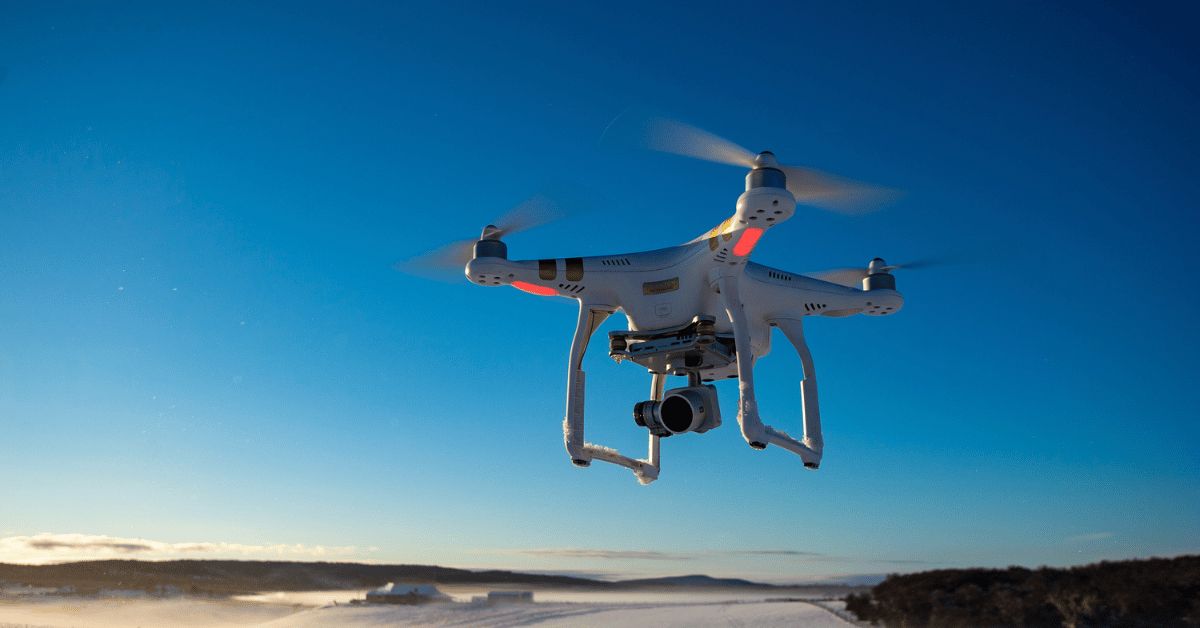Do you know that drones have come a long way from being just a toy for enthusiasts? Over the years, they have evolved to become a crucial tool across various industries and sectors. From agriculture to wildlife conservation, drones are now being used in innovative ways that were once unimaginable.
In this article, we will explore five new uses of drones that are revolutionizing different industries. Whether you are an action sports enthusiast or a construction site manager, there is something for everyone in this list. So, buckle up and get ready to discover how drones are changing the game!
Action Sports
You can strap on your skis or hop on your mountain bike and let the drone follow you, capturing every twist and turn as you shred down the slopes or trails. Action sports enthusiasts are now using drones to capture their adrenaline-filled adventures, providing a unique perspective that was once only possible through expensive helicopter shots.
These drones use obstacle avoidance technology to keep themselves and the athletes safe from collisions, allowing for uninterrupted filming. This not only produces stunning footage, but also helps athletes analyze their technique and improve their skills.
With the rise of social media, the use of drones in action sports has become increasingly popular, creating a community of thrill-seekers who share their experiences and inspire others to push their limits.
Agricultural Crop Monitoring
With the help of drones, farmers can efficiently monitor their crop growth and health, allowing for better decision-making and increased yields. Drones equipped with multispectral cameras can capture images of crops that are not visible to the naked eye, such as infrared and near-infrared wavelengths. These images can provide crucial information about the chlorophyll content, water stress, and other indicators of plant health.
By analyzing this data, farmers can identify areas of their fields that need attention, such as irrigation or fertilization. This targeted approach can save time, money, and resources, while also reducing the environmental impact of agricultural practices.
Drones can also cover large areas of land quickly and easily, providing farmers with up-to-date information about their crops that they can use to make informed decisions. With the help of drone technology, farmers can achieve higher yields and more sustainable farming practices.
Construction Site Surveillance
When monitoring a construction site, it's essential to have eyes on every corner, which is where drone surveillance comes in handy. Drones equipped with high-resolution cameras can quickly cover large areas, providing real-time footage to construction managers and contractors. This technology allows for a more effective and efficient way of monitoring the site, identifying potential hazards, and ensuring safety protocols are followed.
Moreover, drones can also be used to create 3D maps and models of the site, allowing for better planning and decision-making. With this technology, construction managers can monitor progress, identify delays, and make adjustments to the project timeline.
With the use of drones, construction site surveillance has become more accessible, cost-effective, and safer for workers.
Wildlife Conservation
Wildlife conservation efforts have been revolutionized by the implementation of drone technology, allowing researchers to gather valuable data on animal populations and their habitats. Drones equipped with cameras and sensors can fly over vast expanses of land, capturing high-resolution images and data that would have been impossible to gather using traditional methods.
This data can then be used to study animal behavior, population growth or decline, and habitat changes that may be affecting their survival. One of the primary advantages of using drones for wildlife conservation is the ability to survey remote or hard-to-reach areas without causing disturbance to the animals.
This is especially important for endangered species, as any disruption to their natural habitat can have detrimental effects on their survival. Drones can also be used to track animal migration patterns, monitor poaching activities, and even help with wildlife rehabilitation efforts.
Overall, the use of drones in wildlife conservation has opened up new possibilities for researchers and conservationists, allowing them to gather valuable data and make informed decisions to protect our planet's precious wildlife.
Rapid Response Emergency Services
The implementation of drone technology has revolutionized the speed and efficiency of emergency response services, allowing for rapid deployment and assessment of critical situations. Drones equipped with thermal imaging cameras and other sensors can quickly locate missing persons, assess the extent of a fire, or survey the damage caused by a natural disaster.
This technology has proven to be particularly useful in situations where traditional methods of response are limited, such as in remote or hazardous areas. In addition to their speed and efficiency, drones also provide a safer alternative for emergency responders.
By using drones to assess a situation before sending in personnel, responders can better understand the risks involved and make more informed decisions. Drones can also be used to deliver medical supplies or other critical items to those in need, further reducing the risk to responders.
With the continued development of drone technology, the potential for their use in emergency response services is vast, and their impact on saving lives and reducing risk is immeasurable.

